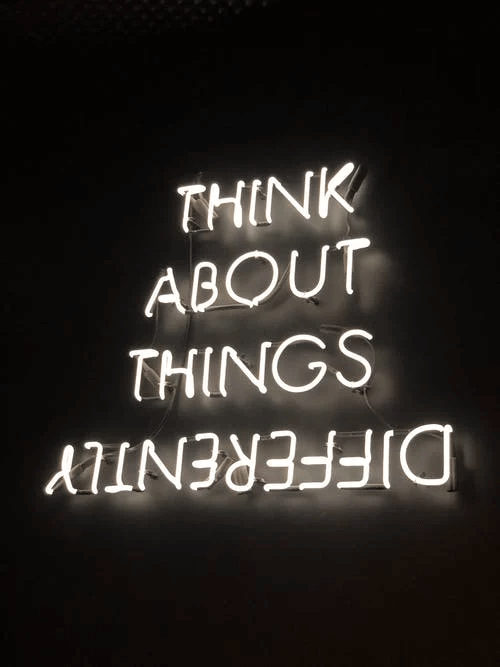How Tough is the McKinsey Selection Process?
McKinsey is the dream company for many professionals. So if you have your sights set on it, you better bring your A-game.

McKinsey is one of the most prestigious and largest MBB. As such, it takes its candidates through a challenging and daunting hiring process. Out of the 200,000+ applications, only 1% of the applicants get to the finish line. Given their status in the industry, they are allowed to nitpick candidates.
But even with their strict requirements, making it to the finish line is not an impossible task. Contrary to popular belief, McKinsey consulting positions are not reserved for the brightest and smartest people. If anything, candidates who have good business acumen and prepare diligently for the interview process stand a better chance.
In this piece, we'll try and guide you through the interview process and offer tips on how you can stand a chance.
With that said, there's no way we can provide all the instruction you'll need in a post this long. However, we can help you understand what you are up against and point you in the right direction for you to eventually immerse yourself in all manner of primers on accounting, finance, and marketing; learning about M&A, profitability, and market entry cases and drawing up issue trees.
Making the Cut

From the time you hand in your application to when you receive and accept a job offer, you will go through an intense recruitment process. The recruitment process might last between two and three months, with an average of two weeks between the steps.
While there is a standard recruitment process at McKinsey, some deviations are depending on your qualifications and experience.
As an undergraduate, you will take either the Imbellus or PST tests before getting an invite to an interview. However, MBA students and experienced professionals are exempted from this. For such candidates, screening includes reviewing the resume and cover letter, and an HR interview on a phone call.
Lastly, if you are going for an Expert position, you'll receive an expert interview instead. If you are a coder, you'll have to complete some coding tests and hold project discussions with in-house product engineers. Alternatively, you'll discuss agile and coaching development methods with the team.
But regardless of the recruitment process, you undergo, it will be tough, but worthwhile in the end. Not only will you be getting a rewarding salary, benefits, and bonuses, you'll also be positioned for success should you choose to leave the company. McKinsey has an Alumni Network that is not only involved in the recruitment process but also acts as connections for those looking to leave the company.
To get an idea of how important the McKinsey alumni community is, below are some top McKinsey alumni.
- Sundar Pichai – the CEO of Alphabet Inc. a subsidiary of Google
- Sheryl Sandberg – the COO of Facebook
- James Gorman – the CEO of Morgan Stanley
Now, with so much at stake, you can't afford to go into the recruitment process half-baked. Below is what to expect at every stage to help you prepare.
Applications

Your resume and cover letter are your first step to landing a position at McKinsey. Think of these documents as your chance to make a great first impression.
Some people believe that getting through this stage of the process is all about luck. Well, there is some truth to this since junior consultants review the applications. They receive a stack of resumes and no extra time during their day to review them. As such, at best, they skim through the resumes and cover letters.
Moreover, McKinsey often picks candidates from certain schools like MIT, Stanford, and Wharton that often have boatloads of talent. But this doesn't mean that if you didn't attend these schools, you are doomed. You can always customize your application to stand out. Here's how you do it.
Assuming your qualifications meet McKinsey standards, show that you possess the qualities they are looking for including;
- Personal impact
- Entrepreneurial drive
- Problem-solving skills
- Leadership abilities
Finally, in your application, show that your dream company is McKinsey and not Bain or BCG. Let them know you did your research, engaged McKinsey consultants, and have customized arguments as to why they are your number one choice.
Assessments
Assessments come in many forms and depend on your qualifications and experience. The one you should worry about least is the HR screening interview. It's done over the phone and reviews your background. The questions during the phone interview include;
- Background questions – for instance, ‘tell me about yourself.'
- Specific skill questions – for instance, ‘tell me about when you helped solve a team problem.'
- Motivational questions – questions like ‘why do you prefer McKinsey?'
These interviews last for 20 minutes.
As an undergraduate, you will go through a PST or an Imbellus assessment.
As a consultant, you'll read and analyze a lot of data. You'll then have to draw conclusions from the data and link them to your client's problem. PST is designed to test if you can do this. If you pass the test, it's a sign you'll excel as an analyst.
The assessment is compiled as a written test with 26 multiple-choice questions and with a 1-hour limit. It feels like GRE and GMAT tests. Some of the questions you will encounter include;
- Which of the following conclusions is accurate considering the data below?
- Calculate a, b, and c using the below data.
The PST test doesn't require a calculator or an economics background. However, you'll need to manage your time efficiently. But if you don't manage to complete the questions, don't worry, McKinsey doesn't truly expect you to.
On the other hand, the Imbellus test is a video game that uses data science to assess your problem-solving skills. The test is split into two games, each with a 1-hour timeframe. Using these games, interviewers don't just look at the answers you offer but also how you arrive at your answers. This gives a clear picture of your problem-solving skills, even if you don't complete the tests.
After passing the resume and cover letter screening stage, McKinsey will send the digitized assessment to your email. You'll have seven days to do the tests.
Interview

In this stage, you'll go through a case interview, which is another version of problem-solving tests. These tests are notorious for stumbling many candidates. But if you understand how to approach them, they will get you an inch closer to a job offer.
Case interviews include hypothetical but real client problems. They are designed to test how you can structure ambiguous and tough client challenges, identify the real problem, process and analyze data, structure your recommendation, and communicate your thoughts.
Generally, there are two types of case interviews;
- Candidate led case interviews
- Interviewer led case interviews
McKinsey prefers using the interviewer led style. This means that the interviewer will give you a problem and answer some of your follow-up questions. Then, you will come up with an approach to help solve the problem.
As you answer the question, treat it like a mini case and verbalize every step and calculation you make. This will help you avoid mistakes and allow the interviewer to follow along. So even if you don't get the correct answer, they'll know the approach you took.
Fit Interview
Many candidates make the mistake of neglecting this stage of the process. The fit interview makes up 50% of the assessment. Failing to prepare for this stage sets you up for failure.
During the interview, you can expect questions like;
- ‘Tell me about yourself.'
- Why do you want to be a management consultant?
- Why do you prefer McKinsey?
- Describe one of your challenging times when you had to work extra hard to achieve a goal on a tight deadline.
This interview can be about 30 minutes long.
To stand a chance on acing these questions, read up on the best replies to offer.
Coaching

Despite setting up lots of roadblocks in the interview process, McKinsey wants you to ace the interview. As such, they provide you with resources to help you prepare. These resources include;
- Two-hour webinars by the McKinsey alumni explaining cases interviews
- A 45-minute practice case interview with an alumnus
- Four case interviews to practice
If these aren't enough, you can hire a professional to help with your resume or practice case interviews. With a high salary on the line, paying a professional seems like a prudent move.
However, bear in mind that your competition might hire a professional as well. Therefore, with or without professional help, you have to work hard and smart.
Your Turn!

Now that you understand what the McKinsey recruitment process entails, it's time to hit the ground running. Take several weeks to prepare for the interview process and give it your all. It might be challenging, but it's not impossible. After all, what are two or three months in comparison to many years working at your dream company? Not to mention the option of leaving for even greater opportunities?
839GYLCCC1992



Leave a Reply